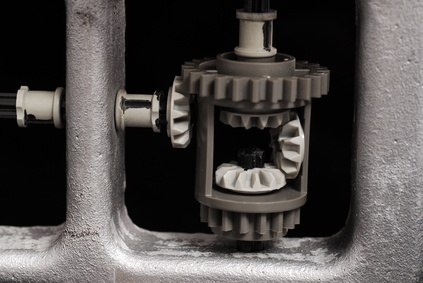
A differential is essentially a mini-transmission that transfers rotational force to two axles. The differential exists to account for the difference in rotation between the left wheel and right wheel when a car is making a turn. In heavy cars, like a Chevy Trailblazer, a limited slip differential is used as it only allows for a certain amount of slip between the left and right side to allow for greater traction.
Worn-out gearing can cause a loss of power and decreased acceleration. The differential has numerous gears, pinions and planetary gears that all interact. If the teeth on any of the geared surfaces wear down, this can decrease the differential's ability to get power to the wheels. You may be able to hear a grinding noise, especially with a limited slip differential, that would indicate this. It can be repaired, but it is often cheaper just to replace the entire differential.
Broken planetary gears can cause a car to lose traction at certain speeds. The planetary gears transfer power from the inner gears to the outer pinions. Some planetary gears are only engaged at certain RPM levels so this can be noticed by power loss only once the car reaches a certain RPM threshold. If the planetary gear has detached from its orbit, you will hear clunking noise from the rear axle. This requires a complete replacement of the differential.
A clutch in the limited slip part of the differential could have worn out. If this happens, there will be no noise, but if the car is in a low traction environment, like wet asphalt, you will get significant wheel spin without traction. The limited slip differential is designed to prevent this from happening, especially under load. The clutch can be replaced by any mechanic and does not require a replacement differential unless there is other damage present.
Corrosion on the outside of the differential could cause the axles leading into and out of the unit to break. This can be noticed by the lack of power being sent to the rear. You will be able to hear the transaxle spin (that sends power to the differential), but the rear wheels will not move (as the differential has no power to send).